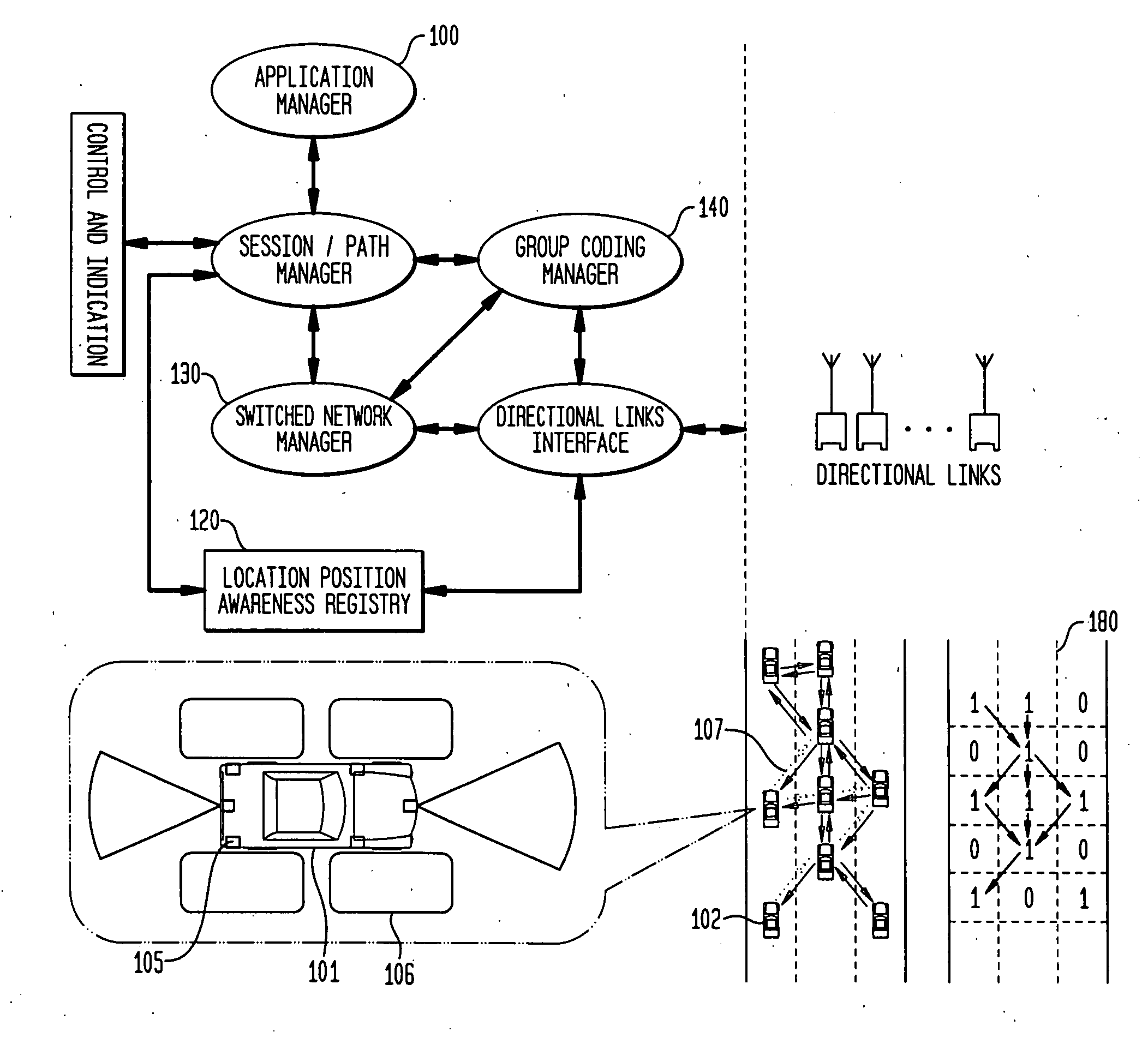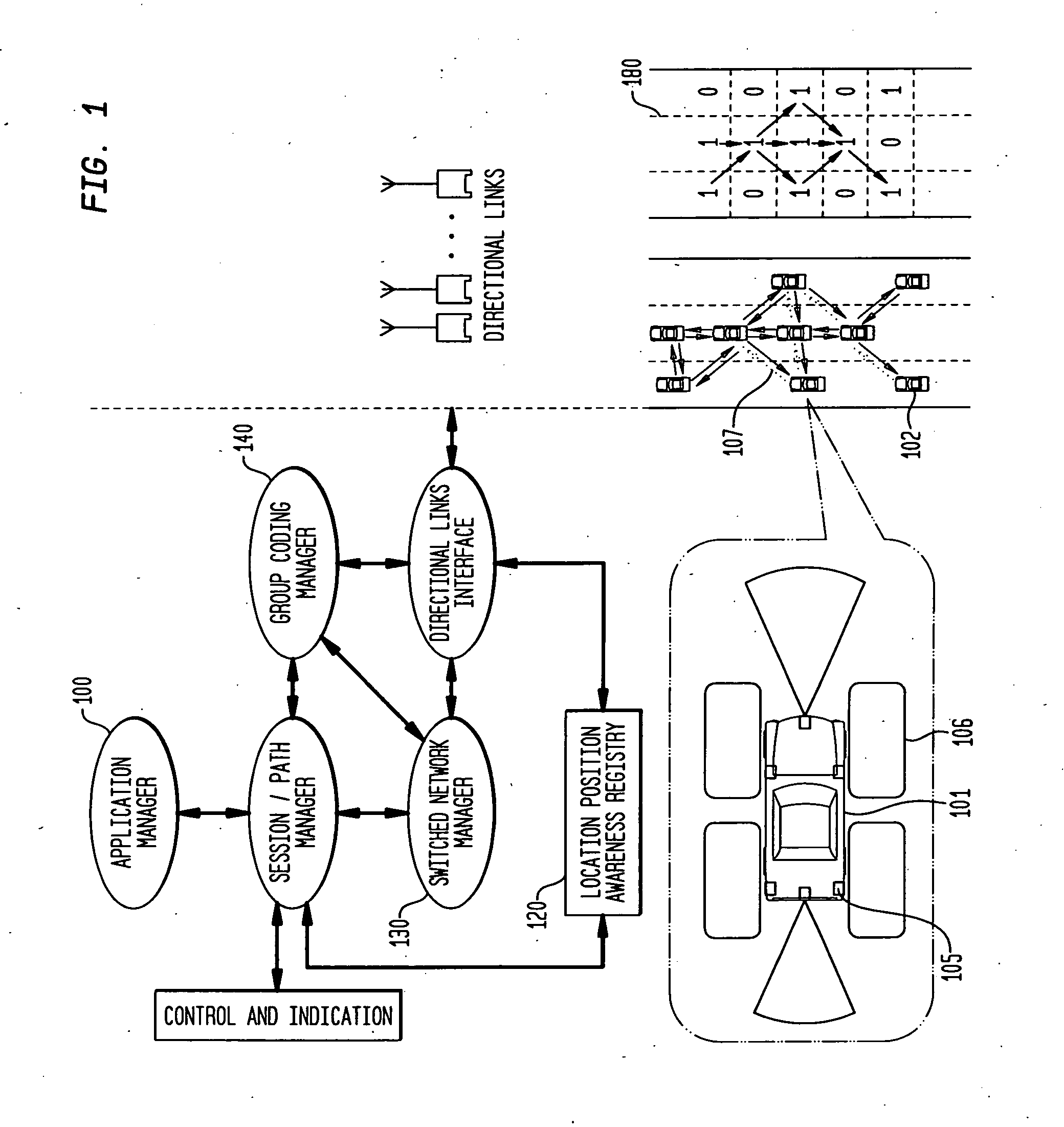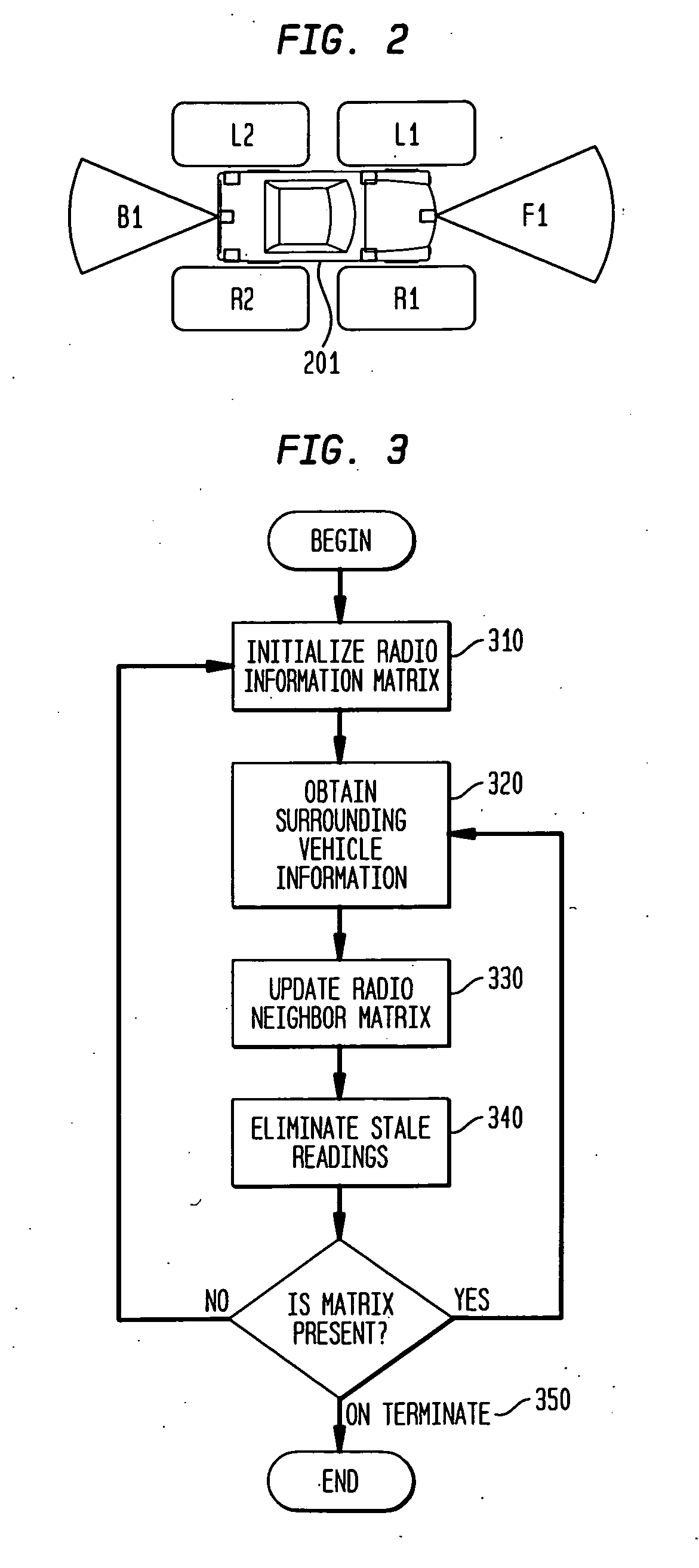Systems and Methods for Multi-Beam Optic-Wireless Vehicle Communications
a multi-beam optic and vehicle technology, applied in the field of communication networks, can solve the problems of reducing link throughput, affecting link throughput, and affecting the quality of multi-beam optic wireless vehicles, so as to achieve ultra-low-overhead and high-throughput vehicle communications, the effect of reducing the number of overhead
- Summary
- Abstract
- Description
- Claims
- Application Information
AI Technical Summary
Benefits of technology
Problems solved by technology
Method used
Image
Examples
first embodiment
[0062]The next embodiment is NBIVS using a mesh. A mesh (or tree) provides connectivity among vehicles in the network so that, if messages flow through the mesh spanning all vehicles, the messages would be delivered to all the vehicles. Having a mesh eliminates redundant packet transmissions. In this embodiment, a mesh is needed and maintained for disseminating messages. Unlike the first embodiment, this requires a Switching Table, the generation of which is further described below.
[0063]FIGS. 8A and 8B show the establishment of a broadcast mesh for vehicles in the neighborhood. Each vehicle 801 passes each packet, once, to each next-hop neighbor on the “downward” path in the mesh, i.e., along the packet's forwarding direction. This includes forwarding to the neighbor where the packet came from, as ACK. The mesh ensures no duplicated packet, while similar to the above embodiment; a dissemination scope is enforced (e.g., stop at maximum hop count).
[0064]FIG. 8B shows switching inside...
second embodiment
[0073]FIG. 11 shows the flow diagram for the The flow is almost identical to the previous embodiment (FIG. 7) with the exception of step 1180, where in the present case, the packet is switched to incoming and outgoing interfaces listed in the Switching Table.
third embodiment
[0074]The third embodiment, described in FIG. 12, shows the Two-hop neighborhood method. In this embodiment, when a vehicle 1201 receives a packet, it forwards the packet to only selective immediate neighbors. This is similar to the second method, but the way of generating Switching Table is different from the second method. Instead of using information about the whole network connectivity that is required for the second method, a vehicle uses information about its immediate neighbors and their immediate neighbors (i.e., two-hop neighbors information). The header, switched packet list (SPL), and acknowledgement method are the same as the previous two embodiments.
[0075]This embodiment selects outgoing links from active links using two-hop neighboring information. A vehicle obtains information about two-hop neighbors by collecting information about immediate neighbors from all of its immediate neighbors. When a vehicle contacts an immediate neighboring vehicle first time through a lin...
PUM
 Login to View More
Login to View More Abstract
Description
Claims
Application Information
 Login to View More
Login to View More - R&D
- Intellectual Property
- Life Sciences
- Materials
- Tech Scout
- Unparalleled Data Quality
- Higher Quality Content
- 60% Fewer Hallucinations
Browse by: Latest US Patents, China's latest patents, Technical Efficacy Thesaurus, Application Domain, Technology Topic, Popular Technical Reports.
© 2025 PatSnap. All rights reserved.Legal|Privacy policy|Modern Slavery Act Transparency Statement|Sitemap|About US| Contact US: help@patsnap.com



